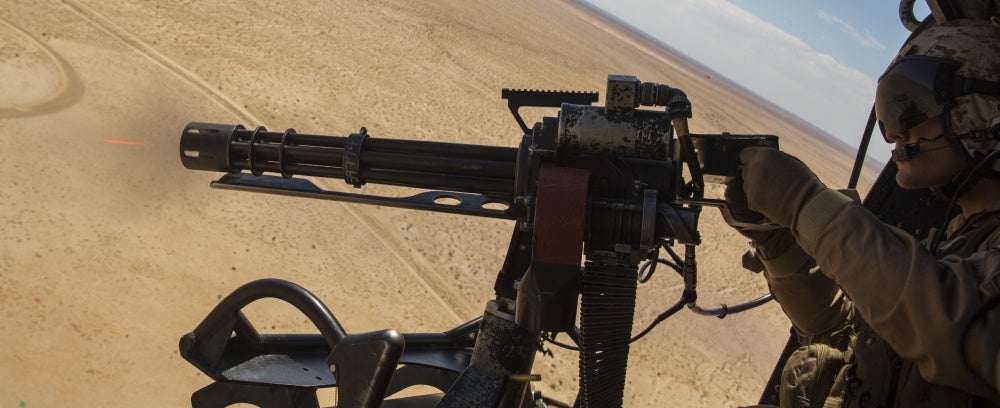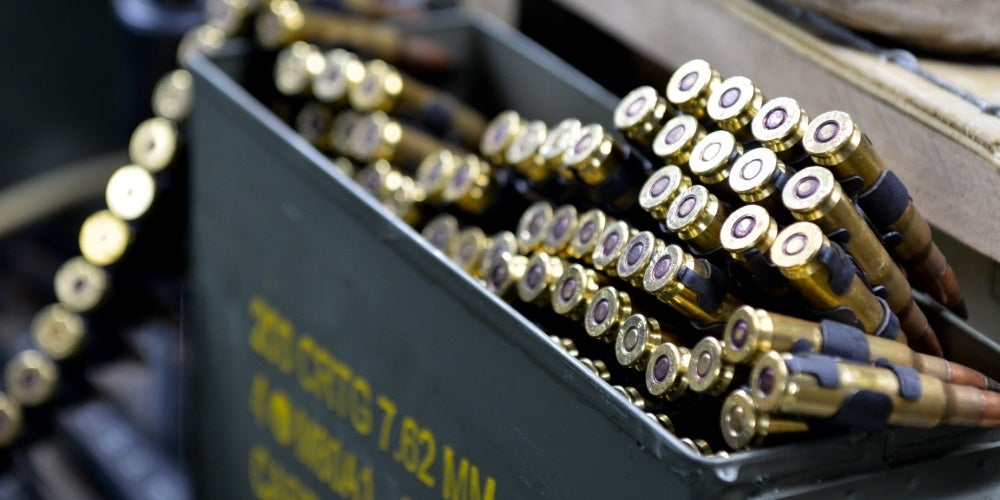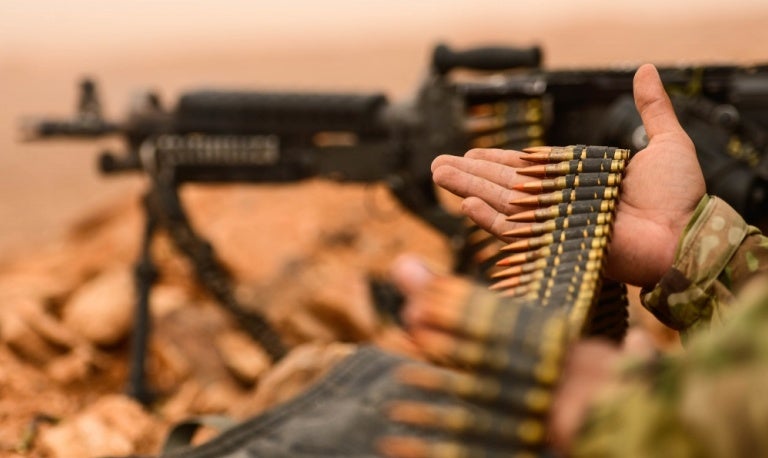US SOCOM Wants Lightweight Belt-Fed Machine Gun Ammunition
The United States Special Operations Command (SOCOM) has published a solicitation for development of lightweight machine gun ammunition. The solicitation was published on the website of a US government program called SBIR (Small Business Innovation Research). SOCOM wants cartridge cases made from materials lighter than brass which at the same time would have higher case capacity, higher pressure ratings, increased corrosion resistance and would be capable of working with standard cartridge belts and machine guns.

In the solicitation text, SOCOM specifies that they want a minimum of 40% of weight reduction compared to the conventional brass-cased ammunition. The new cases must be made of metallic and polymer materials only. I assume cases made of a combination of metals and polymers will also comply with the requirements of this project. Another key point is that this new ammunition must be developed for the 7.62x51mm NATO and .338 Norma Magnum cartridges.

Below you can find the full text of this program:
OBJECTIVE: The objective of this topic is to develop innovative belt link cartridge cases that are significantly lighter than brass cases and have increased internal volume, pressure ratings, corrosion resistance, long term storage, and structural integrity to withstand belt feed in machine guns and high rate of fire mini-guns.
DESCRIPTION: Conduct a feasibility study to develop belt link cartridge case alternative concepts, designs, and materials that meet or exceed the performance of brass belt link cartridge cases with a minimum of 40% reduction in weight. The focus of the study is on metallic and composite materials only. As a part of this feasibility study, the proposers shall address/analyze all viable overall system design options with respective specifications on the key system attributes of cost, internal volume, pressure ratings, shot start, corrosion resistance, water proof, long term storage, and structural integrity to withstand belt feeding in machine guns and high rate of fire mini-guns. In addition to the considerations stated in the “OBJECTIVE” statement above, the study must address the factors below as ways to reduce overall acquisition risk. Factors to address in the study: a) Acquisition cost of a lighter weight cartridge compared to current ammunition production with brass cartridges. What makes the lightweight ammunition attractive for purchase compared to ammunition using brass cartridges? b) Materials used in the manufacturing process, the manufacturing method used (i.e. high temperature welding, friction welding, gluing, etc.). Explain how the materials and the manufacturing methods prevent degradation of ammunition to make it ready for use even while the ammunition is in storage for 10 or more years. c) Explain how the design and manufacturing processes of the cartridge can reduce the overall review, joint safety testing, and environmental hazards analysis and testing to make the cartridge ready for fielding.
PHASE I: PHASE I: Conduct a feasibility study to assess what is in the art of the possible that satisfies the requirements specified in the above paragraph entitled “Description.” The objective of this USSOCOM Phase I SBIR effort is to conduct and document the results of a thorough feasibility study to investigate what is in the art of the possible within the given trade space that will satisfy a needed technology. The feasibility study should investigate all known options that meet or exceed the minimum performance parameters specified in this write up. It should also address the risks and potential payoffs of the innovative technology options that are investigated and recommend the option that best achieves the objective of this technology pursuit. The funds obligated on the resulting Phase I SBIR contracts are to be used for the sole purpose of conducting a thorough feasibility study using scientific experiments and laboratory studies as necessary. Operational prototypes will not be developed with USSOCOM SBIR funds during Phase I feasibility studies. Operational prototypes developed with other than SBIR funds that are provided at the end of Phase I feasibility studies will not be considered in deciding what firm(s) will be selected for Phase II.
PHASE II: Develop and demonstrate 7.62mm NATO and .338 Norma Magnum prototype belt link cartridge cases determined to be the most feasible solution during the Phase I feasibility study.
PHASE III: This system could be used in a broad range of military applications where the weight of small arms ammunition is a critical consideration both for the operator and the logistics system. Lighter weight saves transportation cost for military and commercial ammunition shipments.
SBIR is a US government program that helps the domestic businesses to engage in Federal research and development programs which has the potential to be commercialized. This program particularly includes projects initiated by the Department of Defense. Besides the program that is the subject of this article, there are a number of other defense and small arms related programs in the list of solicitations. You can read the list and brief descriptions of other SBIR programs by clicking here.
Sources:
“SOCOM183-003: Lightweight Machine Gun Ammunition”. (2018, August 24). Small Business Innovation Research. Retrieved from: https://www.sbir.gov/node/1508641
Images from www.dvidshub.net

